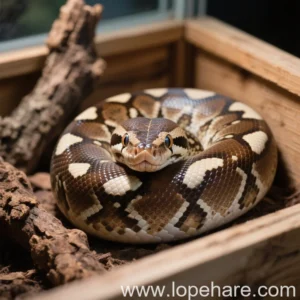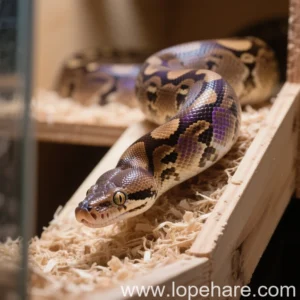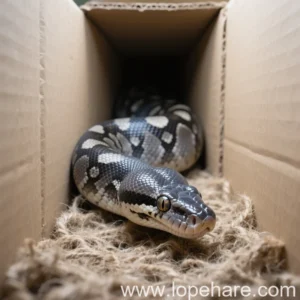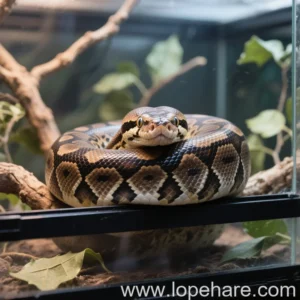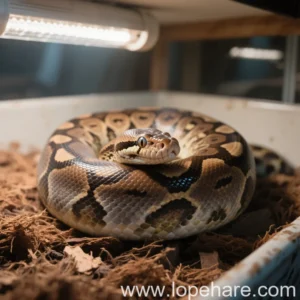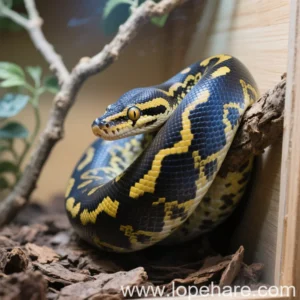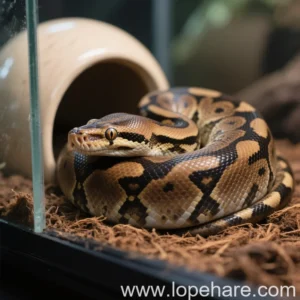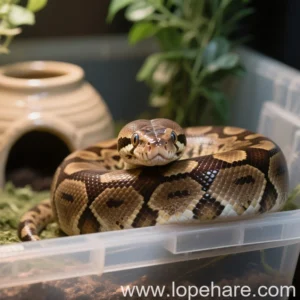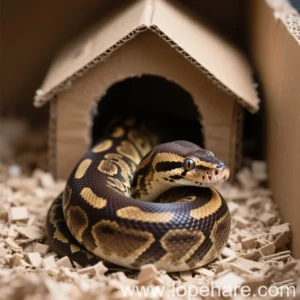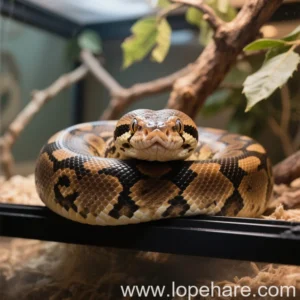Ball Python Night Feeding Habits: Why Your Snake Eats After Dark
As editors at lopehare.com, we spend a lot of time diving into the fascinating world of small and exotic pets, offering detailed guides on everything from snake pet care to arachnid husbandry. One common question we encounter from new Ball Python owners is about their feeding schedule, specifically why these seemingly inactive snakes often prefer to eat after the lights go out. If you’ve offered your Ball Python food during the day only for it to be ignored, and then woken up to find the meal gone, you’re witnessing a fundamental aspect of their biology.
Understanding your Ball Python’s natural behaviors is key to providing optimal care and ensuring they thrive in captivity. Their preference for nighttime feeding isn’t just a quirk; it’s deeply rooted in their evolutionary history as nocturnal predators.
Natural Nocturnal Behavior
Ball Pythons (Python regius), native to West and Central Africa, are primarily nocturnal animals. This means they are most active during the night and spend the majority of their day hours resting in hides, burrows, or concealed spots. This behavioral pattern is driven by several factors in their natural environment:
- Temperature Regulation: Africa can get incredibly hot during the day. Being active at night allows them to avoid the peak heat and regulate their body temperature more effectively in cooler conditions.
- Predator Avoidance: Many diurnal predators pose a threat to Ball Pythons. Moving and hunting under the cover of darkness provides greater safety.
- Prey Availability: Many of their natural prey animals, such as small rodents and birds, are also more active during the night or at dawn/dusk.
Because their entire life cycle and hunting strategy are geared towards operating in low light, their senses are adapted for it. They rely heavily on their sense of smell and, crucially, their heat-sensing pits located near their nostrils to detect warm-blooded prey in the dark.
Did You Know? The term “nocturnal” describes animals that are active at night, contrasting with diurnal (active during the day) and crepuscular (active during dawn and dusk). Ball Pythons fall firmly into the nocturnal category.
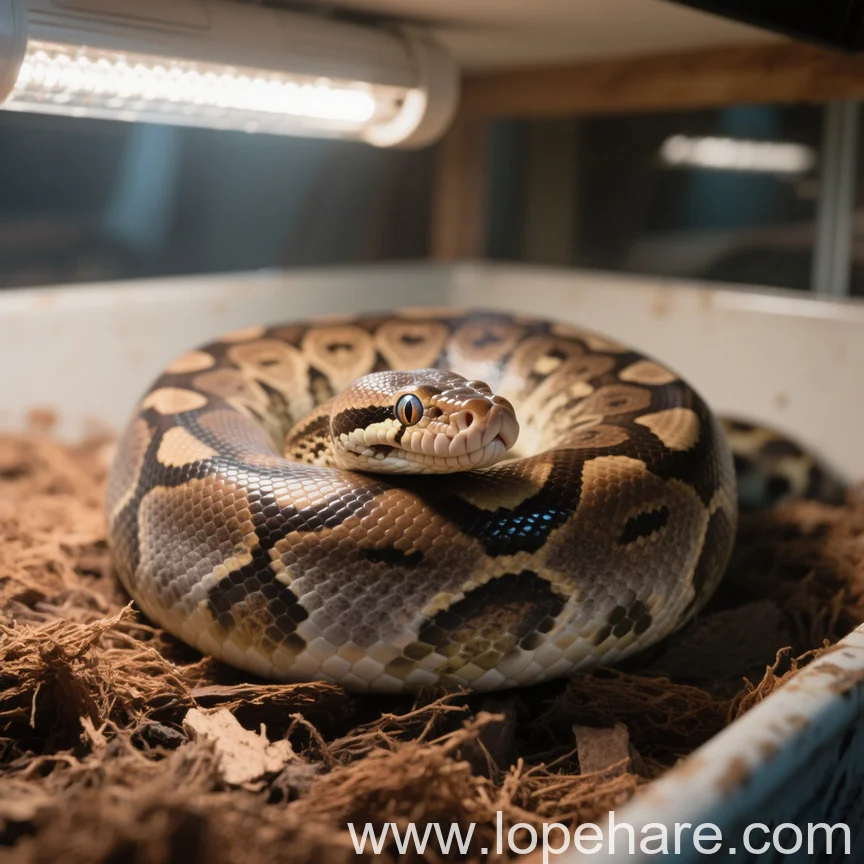
Ambush Predation Strategy
Ball Pythons are classic ambush predators. They don’t actively chase down prey over long distances. Instead, they find a suitable hiding spot and wait patiently for an unsuspecting meal to pass by. This waiting game is often played out during the hours when their prey is most active – which, as established, is frequently at night.
Their method involves:
- Finding a strategic location, often near known rodent trails or burrows.
- Remaining motionless and concealed, sometimes for hours.
- Using heat pits and smell to detect prey in the darkness.
- Striking with incredible speed and precision when prey comes within range.
- Constricting the prey until motionless before swallowing it whole.
Given this hunting style, it makes perfect sense that they would be more receptive to feeding attempts during the times they are naturally “on patrol” for food. Offering food during the day, when their instinct is to hide and rest, often results in rejection.
According to sources like Wikipedia’s entry on Ball Pythons, their cryptic coloration also aids in their ambush strategy, allowing them to blend into their surroundings while waiting for prey.
Creating the Right Environment for Night Feeding
To encourage your Ball Python’s natural feeding behavior and make mealtime successful, ensure their enclosure mimics their natural needs, especially during their active phase:
| Parameter | Importance for Feeding |
|---|---|
| Temperature Gradient | Crucial for digestion. Ensure a warm side (88-92°F basking spot) and a cooler side (75-80°F ambient) are maintained 24/7. Night drops are natural but ensure the warm side remains adequate. |
| Humidity | Proper shedding and overall health are linked to appropriate humidity (50-60% baseline, higher during shed). This environmental factor impacts comfort and willingness to move and eat. |
| Hides | Provide multiple secure, dark hides (at least one on the warm side and one on the cool side). Ball Pythons feel safe and comfortable in hides, making them more likely to venture out to hunt when they feel secure. |
| Lighting Cycle | A strict day/night cycle (10-12 hours light, 12-14 hours dark) is vital. This cues their natural behavior patterns, including nighttime activity and feeding readiness. Avoid using bright white lights at night. |
| Substrate | A suitable substrate helps maintain humidity and allows the snake to burrow slightly if desired, enhancing their feeling of security. |
Feeding your Ball Python after the lights have been out for an hour or two aligns with when their natural instincts kick in. This is when they are most likely to leave their hides and actively seek food using their enhanced nighttime senses.

Recognizing Feeding Cues
Sometimes, your Ball Python might show subtle signs that they are becoming active and potentially ready to feed. These include:
- Emerging from their hide in the evening/night.
- Increased movement around the enclosure.
- Investigating decor or the perimeter of the tank.
- Holding their head up and flicking their tongue more frequently, “smelling” the air.
These behaviors are your cue that they are entering their active phase. Offering food during this time, rather than when they are tucked away sleeping during the day, significantly increases your chances of a successful feeding response. Learning to recognize these understanding ball python feeding cues is part of becoming a skilled keeper.
Troubleshooting Night Feeding Issues
While feeding at night is natural, some owners still face challenges. If your Ball Python isn’t eating, even at night, consider these factors:
- Enclosure Parameters: Double-check your temperatures, humidity, and hides. Stress from incorrect conditions is a major reason for going off food.
- Prey Temperature: Ensure prey items (if frozen/thawed) are warmed sufficiently. Ball Pythons detect prey via heat; a cold rodent won’t be enticing. Use warm water, ensuring the inside is warm, but the outside isn’t dripping wet.
- Handling/Stress: Avoid handling your snake close to feeding time. Give them peace and quiet to focus on hunting.
- Prey Size: The prey item should be roughly the same size around as the thickest part of the snake’s body.
- Consistency: Offer food on a consistent schedule, usually every 7-14 days depending on the snake’s age and size.
- Season/Environment: Sometimes, changes in season or environment (even in a controlled enclosure) can impact appetite. Ensure environmental stability.
Persistent Refusal: If your Ball Python consistently refuses food for an extended period (weeks to months, especially in adults), and you’ve verified all husbandry parameters are correct, it’s wise to consult a reptile veterinarian to rule out underlying health issues.
Mastering best practices for feeding ball pythons at night involves patience and careful observation.
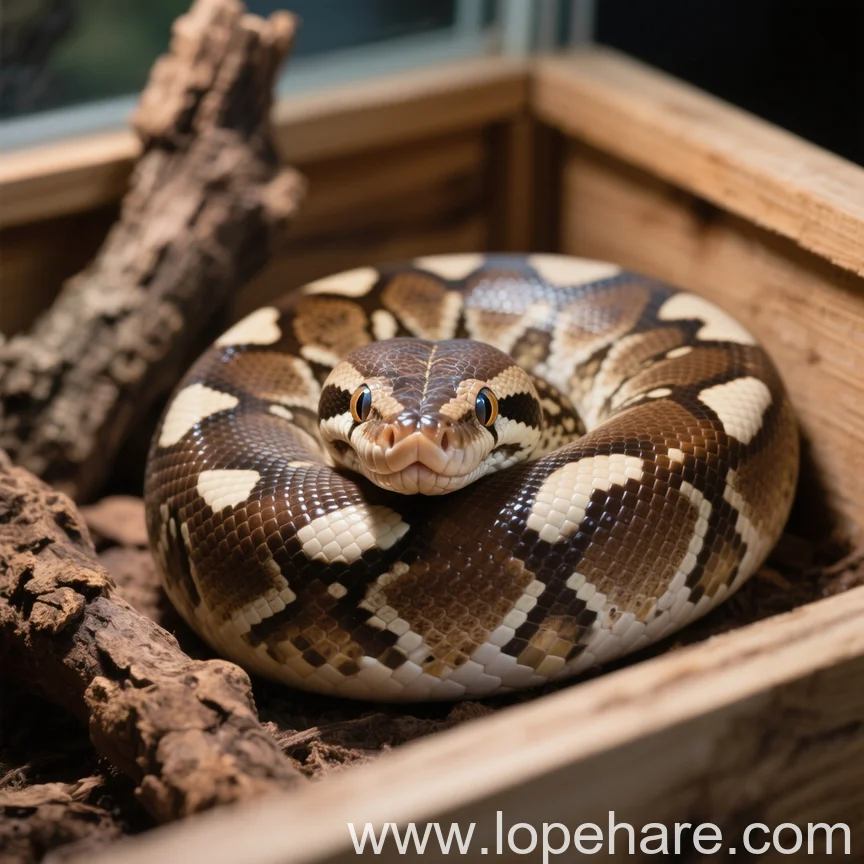
Patience and Observation
Part of the journey of caring for a Ball Python, as with many of the fascinating animals we cover at lopehare.com, is learning to read your pet and respect its natural rhythms. Offering food at night is working *with* their biology, not against it. Don’t be discouraged if they don’t eat immediately every time; sometimes they might not be in a hunting mood, or perhaps they are approaching a shed cycle, which often suppresses appetite.
By providing a secure, correctly regulated enclosure and offering food during their natural active period, you are giving your Ball Python the best possible chance to exhibit healthy feeding behavior. Observing their habits, their hiding spots, and their activity levels in the evening will help you understand their individual routine.
If you’re asking yourself, why is my ball python not eating at night, review your setup, timing, and the points mentioned above. More often than not, a slight adjustment will align your efforts with their instincts.
Conclusion: Trusting Instincts
In conclusion, Ball Pythons are undeniably nocturnal hunters, and their preference for eating at night is a fundamental aspect of their nature. As responsible keepers, our role is to facilitate these natural behaviors by replicating their environmental needs and timing our care activities, like feeding, to align with their biological clock. Understanding and respecting this allows for a less stressful experience for both snake and owner and is crucial for their long-term health and well-being. Embracing their nighttime nature is key to successful Ball Python husbandry.
References:
- Wikipedia. (n.d.). *Python regius*. Retrieved from https://en.wikipedia.org/wiki/Python_regius
